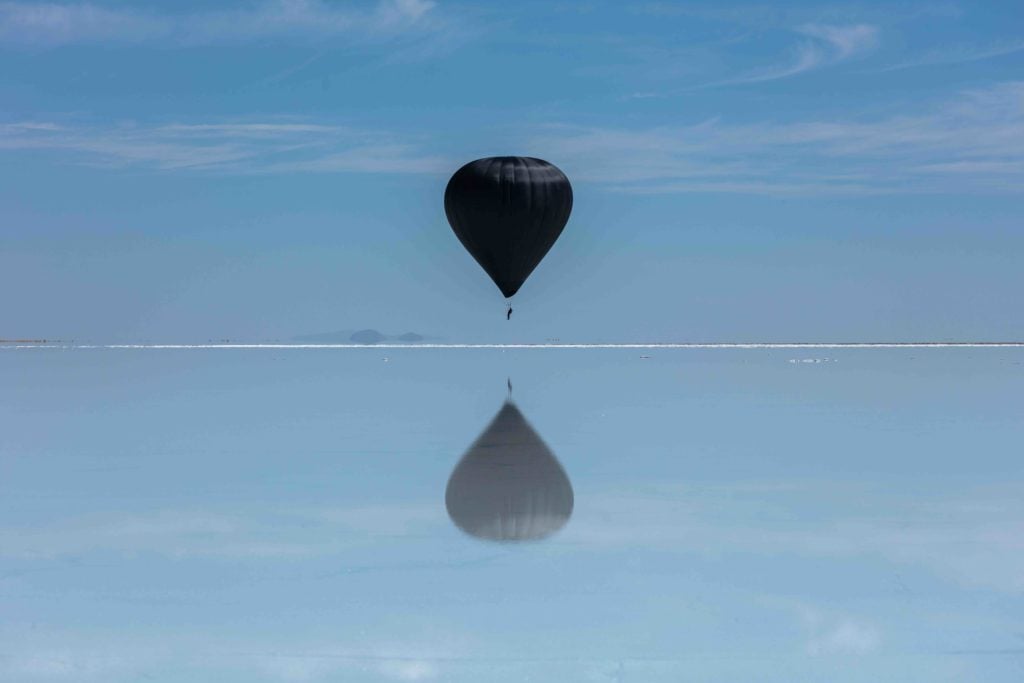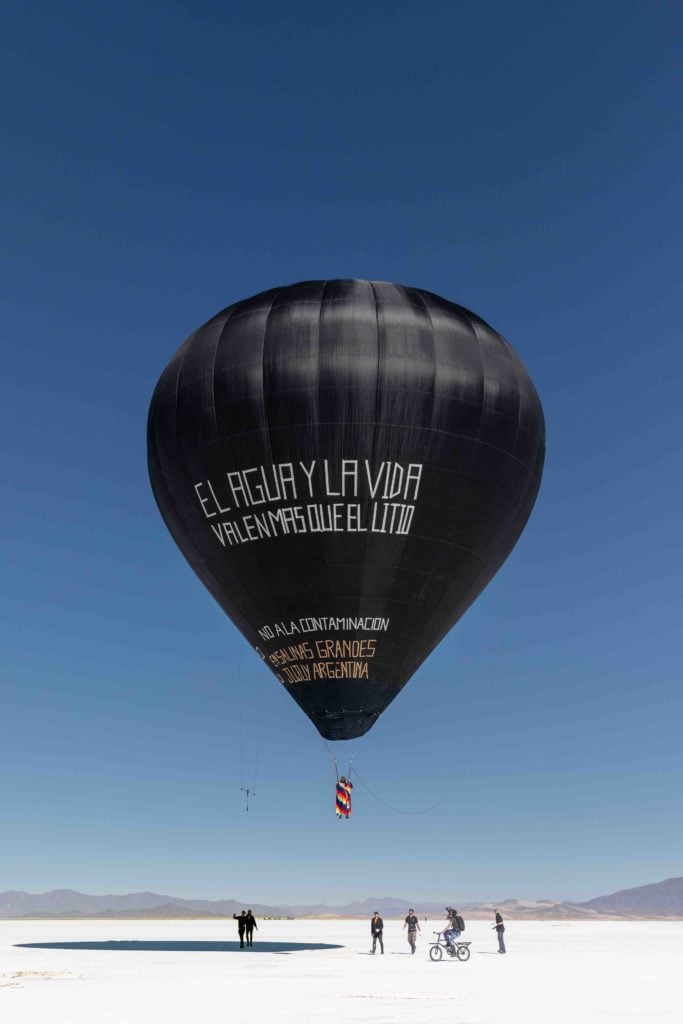Art World
Environmental Artist Tomás Saraceno Successfully Flies a Solar-Powered Hot Air Balloon Over Argentina, Breaking Six World Records
The event is part of the South Korean band BTS’s global public art project.

The event is part of the South Korean band BTS’s global public art project.

Naomi Rea

Tomás Saraceno just earned a spot in the Guinness Book of World Records—many times over.
The Argentinian artist broke six world records when his fully solar-powered hot air balloon successfully took flight over a salt lake in Argentina this week. The Berlin-based, Argentinian artist’s project was commissioned by K-Pop superstars BTS as part of their new global public art initiative.
The artist has been experimenting with creating a hot air balloon fueled only by the heat of the sun and the wind for 20 years. During a test flight on January 25, the balloon was lifted to a height of 892.7 feet for 1 hour and 21 minutes, crossing a distance of 1.58 miles. The journey set world records with the World Air Sports Federation for altitude, distance, and duration of a hot air balloon flight powered without propane. (The three records counted twice, once in the general category and once in the “female” category, because the pilot, Leticia Marques, is a woman.)
On January 28, the official debut of Saraceno’s flying sculpture over the Salinas Grandes salt lake was live-streamed to some 26,000 viewers as its pilot was lifted to a height of 577 feet and flew for 37 minutes, traversing some 1.59 miles, breaking the earlier records for distance.
Powered solely by the sun and air, without use of lithium, solar panels, helium, or fossil fuels, the project is the historic outcome of an interdisciplinary collaboration between experts in the fields of art, science, and environmental activism. Saraceno’s balloon was filled with air by pedal-powered fans and the air inside was heated by the sun’s rays, which were amplified by the white surface of the salt lake plane below.
The artwork is named Aerocene Pacha, after Saraceno’s Aerocene Foundation and the Andean concept of the cosmos, pacha, which links what lies beneath the earth’s surface to the furthest reaches of the universe.
The flight was a “long-dreamed of journey” for the artist, who says in a statement that his record attempt—completed 50 years after man first landed on the moon—is a “radically different” kind of voyage. “Our landing here will be one small step in the air, one giant leap for this planet and its climate,” Saraceno says.
The artist hopes that the experiment will contribute in a small way to shifting how we regard mobility. Instead of always aiming to go “faster, further, quicker,” Aerocene Pacha aligns itself more closely to the natural rhythms of the planet, with distance and speed entirely dependent on the sun and wind.
At a time when the public is becoming increasingly aware of the negative environmental impact of air travel, and the climate crisis, the artist and his collaborators aim to foster patience and pave the way for a more ethical approach that relies on the earth’s natural energy.

Fly with Aerocene Pacha: Tomás Saraceno for Aerocene 21-28 January 2020, Salinas Grandes, Jujuy, Argentina Human Solar Free Flight as part of Connect, BTS, curated by DaeHyung Lee. Courtesy the artist and Aerocene Foundation. Photography by Studio Tomás Saraceno, 2020. Licensed under CC BY-SA 4.0 by Aerocene Foundation.
The experiment was commissioned by the K-Pop superstars BTS. The South Korean band launched a global public art project called CONNECT, BTS earlier this month, which will support art projects in five cities around the world.
Saraceno says his approach to fossil-free flying also stands in solidarity with the 33 indigenous communities in the region surrounding the Salinas Grandes. The rush to mine lithium for eco-friendly batteries is polluting their drinking water, and Saraceno’s balloon was marked with the phrase “water and life are worth more than lithium” in Spanish. Representatives from four indigenous communities, Tres Pozos, Pozo Colorado, San Miguel del Colorado, and Inti Killa de Tres Morros, took part in the festivities—as did hundreds of Argentinian BTS fans, who concluded the flight by singing songs by the K-Pop superstars.
Saraceno has produced a series of films chronicling each stage of the journey, which will be screened at Centro Cultural Kirchner in Buenos Aires from January 31 to March 22.
The artist is already at work on his next project: creating a fully solar-powered balloon that can also fly at night using retained heat from the sun and earth. Saraceno hopes to travel around the world in the balloon, for which he has already created a semi-transparent silver prototype.